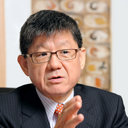Epidemiology and effect on physical function of osteosarcopenia in community-dwelling elderly people in Japan.
Parole chiave
Astratto
Objective: To determine the prevalence of osteosarcopenia and its relationship with physical function in elderly people in Japan. Methods: The subjects were 427 healthy volunteers over 65 years old (205 males, 222 females, average age 71.4 years) who attended health checkups in 2016 and 2017. Body mass index (BMI), bone mineral density in the calcaneus (%YAM), physical parameters, and skeletal muscle mass were measured. The appendicular skeletal muscle index (aSMI) was calculated as arm and leg skeletal muscle mass/height2. Osteoporosis was defined as %YAM < 70%, sarcopenia as aSMI < 7.0 kg/m2 (males) and <5.8 kg/m2 (females), and osteosarcopenia as the presence of sarcopenia and osteoporosis. Results: Osteoporosis alone was diagnosed in 60 subjects (14%), sarcopenia alone in 55 (13%), and osteosarcopenia in 36 (8%). The prevalence of osteosarcopenia was 8% in all subjects, 12% in females, and 4% in males. BMI and back muscle strength were significantly lower in osteosarcopenia than in sarcopenia alone (p < .05); and weight, BMI, body fat, grip strength, and back muscle strength were significantly lower in osteosarcopenia than in osteoporosis alone (p < .05). Conclusion: Osteosarcopenia was significantly associated with muscle weakness. Further studies to identify other related factors are needed for prevention and treatment of osteosarcopenia.


